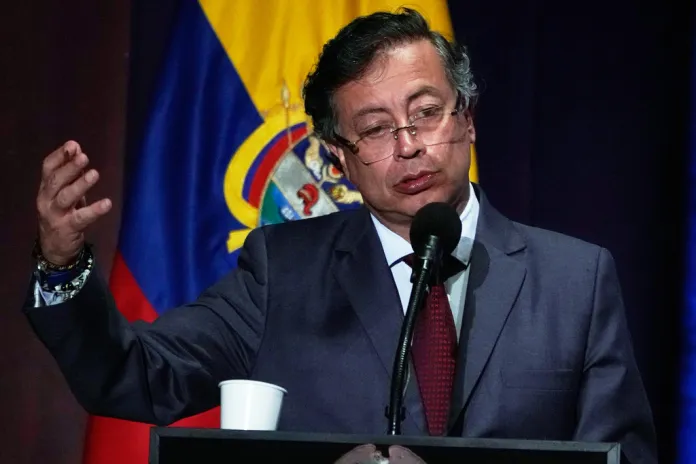How long can Democrats keep the government shut down?
The article discusses the current U.S. government shutdown conflict, highlighting how Senate Democrats are employing a strategy similar to that used by Republicans during Newt Gingrich’s era and the Tea Party days-shutting down the federal government to press thier demands against a president from the opposing party. Many democratic senators have used the filibuster to block funding bills aimed at ending the shutdown, despite some having previously criticized both government shutdowns and the filibuster rule itself.
Senate Minority Leader Chuck Schumer and other Democrats are leveraging the shutdown as a tactical move against President Donald Trump, with no clear resolution in sight. Historically, such shutdowns have had mixed outcomes: past Republican-driven shutdowns sometimes backfired politically, as in 1995 and 2013. Democrats have traditionally been perceived as the party of government and often avoided blame for shutdowns, but this may not hold this time since they currently control neither the presidency nor the Senate majority, relying on the 60-vote filibuster threshold.
Vice President JD Vance criticized Democrats for holding the government “hostage” to their policy demands, a language Democrats themselves have used previously. Simultaneously occurring, the Trump administration is taking actions to make the shutdown’s impacts more painful, including possible federal worker layoffs and cutting funds to certain states, which could shift public perception and political blame.
Some Democratic senators, especially those from swing states or districts Trump won in 2022 (such as John Fetterman, Catherine Cortez Masto, and Angus King), have already broken ranks with the party’s hardline stance, raising questions about the unity and durability of the shutdown effort. Polls indicate weak public support for a shutdown, with a majority of independents opposing it and Democrats divided on the issue.
The article also references past shutdowns: Democrats quickly ended one in early 2018 over immigration issues, while the longest shutdown in U.S. history lasted nearly 35 days after the 2018 elections concerning border wall funding. The current shutdown is the first since that lengthy standoff, underscoring ongoing partisan battles over government funding and political strategy.
How long can the party of government keep the government shut down?
Senate Democrats are so far sticking to a strategy pioneered by Republicans from Newt Gingrich to the height of the tea party: shut down the federal government to impose your will on a president of the opposite party.
Most Democratic senators have used the filibuster to vote down funding bills that would avert a government shutdown. Many of them are liberals who have been on record criticizing both shutdowns and the filibuster rule.
Senate Minority Leader Chuck Schumer (D-NY) rebuffed a shutdown in March. Now his party’s progressive demands one as a way of fighting President Donald Trump, with no clear offramp in sight.
For Republicans, the results of shutdown politics have been mixed at best. Obamacare survived a 16-day partial shutdown in 2013 aimed at defunding the new, and then still quite unpopular, healthcare law. Bill Clinton bludgeoned congressional Republicans with the 1995 shutdowns to recapture momentum and set in motion his successful reelection campaign.
Clinton invited a survivor of the Oklahoma City bombing who was furloughed during the government shutdown later that year to be his guest for the 1996 State of the Union address. “On behalf of Richard Dean and his family, and all the other people who are out there working every day doing a good job for the American people, I challenge all of you in this chamber: Never, ever shut the federal government down again,” Clinton said.
That history is one reason Democrats feel confident they can win a shutdown fight. Another reason is that these funding impasses are often covered by the media. But there is a third reason Democrats have usually prevailed in shutdown showdowns that may not apply as much this time around.
Republicans, traditionally seen as more hostile to government, are often viewed as the shutdown aggressors. Democrats, as the party of government, have been known to escape blame for shutdowns arguably precipitated by their own actions. This holds true no matter which branch of government Democrats control at the time.
Right now, Democrats don’t control any. They are purely relying on the 60-vote threshold to pass most legislation under the filibuster. Up to this point, 44 of the 47 senators who caucus with the Democrats have stoof together against passing a short-term funding bill.
“For years, every single one of us, we can remember Barack Obama on the White House lawn, we can remember Chuck Schumer, we can remember Nancy Pelosi for years, in Chuck Schumer’s case for literally decades, we’ve heard them say you don’t shut the government down over policy disagreement,” Vice President JD Vance told reporters at the White House daily press briefing on Wednesday. “For the first time since the Democrats have been in politics, they are now saying that unless we get every policy item that we demand, we’re going to shut down the people’s government. They’re trying to take a hostage. We’re not gonna let them.”
The “hostage” language is straight out of the Democratic playbook for litigating past shutdowns.
Similarly, the Trump administration is doing what it can to make the shutdown as painful as possible for Democratic interests, up to and including possible layoffs of federal workers.
It’s possible that Democrats can use such maneuvers to argue Republicans have reverted to their anti-government ways and somehow blame them for the shutdown. The sombrero memes and Trump 2028 campaign caps certainly lend credence to the idea that the White House is enjoying the fight more than Democratic leaders are.
But Sens. John Fetterman (D-PA), Catherine Cortez Masto (D-NV), and Angus King (I-ME), who caucuses with the Democrats, have already broken ranks. Trump won Pennsylvania, Nevada, and Maine’s Second Congressional District last year.
In March, 10 members of the Democratic caucus voted with most Republicans to keep the government open, including Sens. Chris Coons (D-DE), Ruben Gallego (D-AZ), Kirsten Gillibrand (D-NY), Maggie Hassan (D-NH), and Jeanne Shaheen (D-NH), who are lawmakers from a mixture of swing and safe blue states. Schumer might not be able to join them this time around, but Sen. Dick Durbin (D-IL), the minority whip, is retiring and could take his place in negotiating a compromise.
A New York Times/Siena College poll taken late last month showed weak support for a shutdown. Only 27% said Democrats should shut down the government “if their demands are not met.” Democrats favored a shutdown by just 47% to 43%, while 59% of independents were opposed.
WHY SCHUMER HAS TO SHUT IT DOWN
Democrats caved quickly in the first of two shutdown fights they picked during Trump’s first term. In early 2018, red state Democratic senators up for reelection that year weren’t eager to keep the government shuttered over an immigration policy dispute. That shutdown lasted only two days.
But the second government shutdown, which took place after the 2018 elections over funding for Trump’s border wall, lasted nearly 35 days and was the longest in history. This is the first government shutdown since then.
" Conservative News Daily does not always share or support the views and opinions expressed here; they are just those of the writer."




